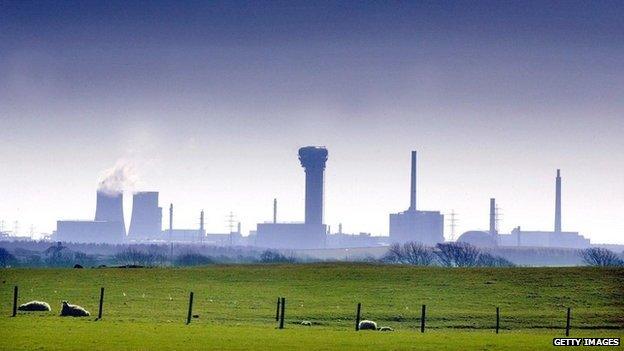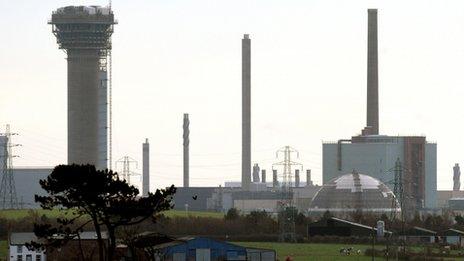Isle of Man food radioactivity 'barely detectable'
- Published

Radioactivity levels in the Irish Sea are monitored by the Manx government due to the proximity of the Sellafield nuclear waste reprocessing plant in Cumbria
Radioactivity levels in fish and food produced and landed on the Isle of Man are "barely detectable", according to the Manx government scientists.
A report conducted in 2013 showed traces of Caesium-137 and Technetium-99 to be "well within acceptable levels".
The isotopes are the main seaborne pollutants linked to the Sellafield nuclear processing plant in Cumbria.
Government scientist, Dr Paul McKenna said the traces found were "well below safe limits for human consumption".
He added: "Tests were also performed on a wide range of other locally produced foods including milk, meat and vegetables - with nothing of significance detected in any of the samples."
According to the report, the food tested included locally produced milk, lamb, beef and pork and locally landed haddock, cod, plaice and lobster.
The Isle of Man government laboratory conducts the annual checks, external due to Sellafield's proximity (about 32 miles) to the Manx coast.
"The Isle of Man does not have a contamination problem due to Sellafield," concluded Dr McKenna.
"We will continue to monitor both for public reassurance and to allow action to be taken should unacceptable contamination occur".
- Published12 June 2014

- Published11 February 2014
